In her third solo exhibition, Winna Go explores her Chinese heritage and the nuances of the diasporic experience through her intricate, realistic paintings of traditional robes and textiles.
Born and raised in the Philippines, Chinese-Filipino artist Winna Go has made waves as one of today’s emerging talents. A Regional Winner of the Philippine Art Awards 2018 and finalist in several prestigious art competitions, many recognize Go for her for distinctive paintings of traditional Chinese robes and fabrics that carry intricate details and textures. Yet beyond being impressive showcases of immense technical skill, these works also serve as explorations for the artist, ones that delve into themes of identity and heritage. This was the crux of Go’s first, breakthrough solo exhibition Threading Through Time, and remains the focus of her third and latest, On the Roots and Routes of Diaspora, which further expands on the concepts of her oeuvre.

READ ALSO: Wonder Wander: Demi Padua And AR Manalo Explore Hidden Worlds
Iconography of the Homeland
Consistent in Go’s works are the popular iconography or figures of Chinese culture, such as the dragon, phoenix (feng huang), arowana fish, and guardian lions, which are often harbingers of good fortune or protectors of the home. These are the most prominent nods to her roots, but the canvas on which they lie is also a homage to her ancestry.
![LEFT: "Equipoise of Being" [阴阳]. RIGHT: "The Azure Dragons" [青龍].](https://lifestyleasia-onemega.com/wp-content/uploads/2024/08/1-Equipoise-of-Being-阴阳-scaled.jpg)
![LEFT: "Equipoise of Being" [阴阳]. RIGHT: "The Azure Dragons" [青龍].](https://lifestyleasia-onemega.com/wp-content/uploads/2024/08/3-The-Azure-Dragons-青龍-scaled.jpg)
These symbols embellish traditional Chinese robes, specifically the cheongsam, which the artist renders with such skillful detail that it feels as though one can reach out and touch the silk material or embroidered details. This was a purposeful decision on Go’s part, as she wanted to refrain from drawing the usual figures or people, instead focusing on an inanimate object of cultural significance that does not “dictate” her identity through mere physical appearance.
Stitching A Story of Heritage
While Go’s exhibitions center on identity and heritage, each one focuses on different aspects of these themes, expanding on her ongoing exploration and conversation on what it means to be part of the Chinese immigrant community.
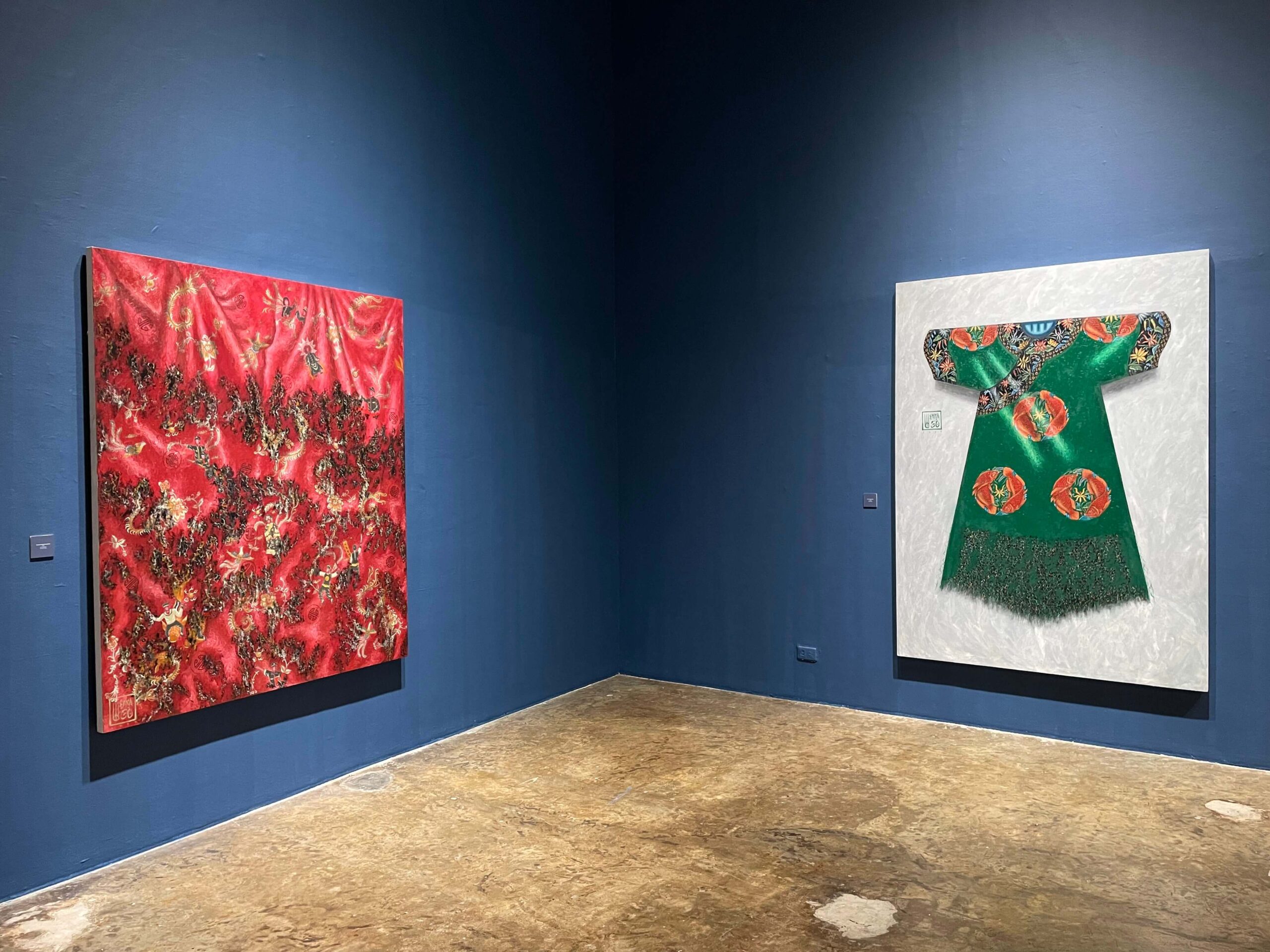
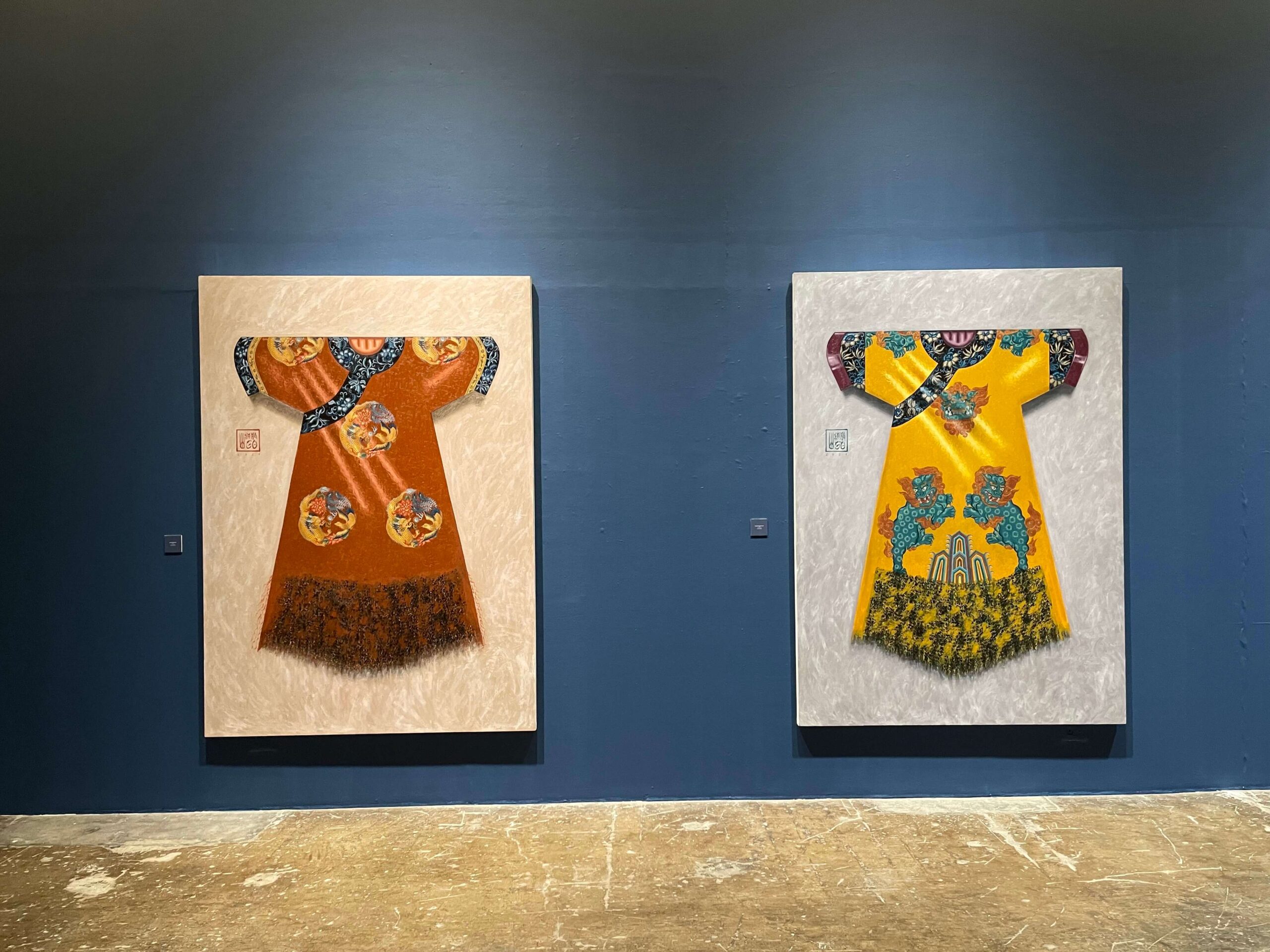
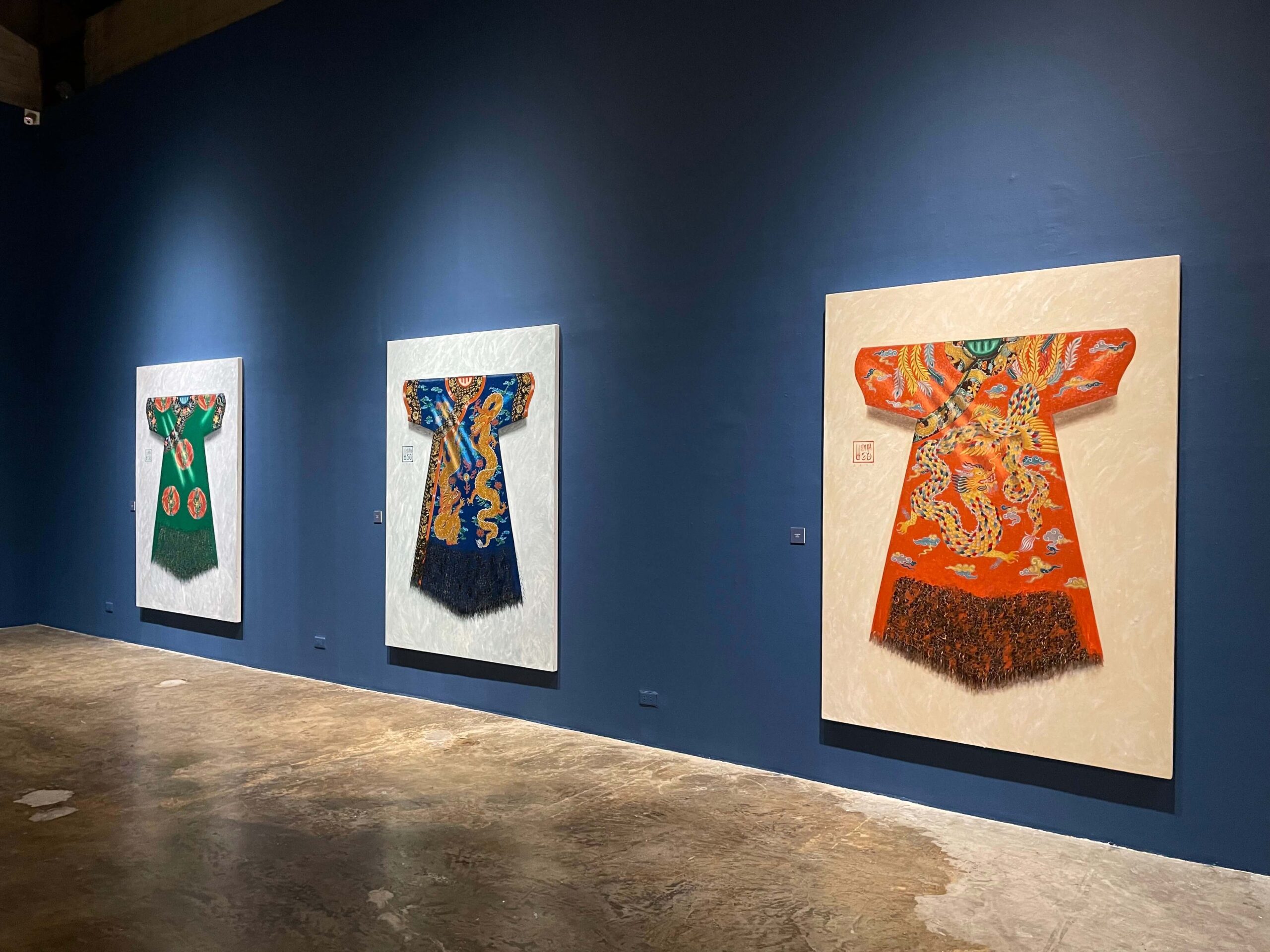
As the name suggests, her first exhibition, Threading Through Time, grappled with the concept of her culture through the lens of time. Art critic Carlomar Arcangel Daoana writes about her first exhibition: “Threading Through Time […] is the artist’s tender attempt to reclaim the precious bits and pieces of self that, in the absence of conscious effort to preserve, may erode and become obsolete.”
This is especially true, as Daoana points out, in an increasingly globalized world where no culture is homogeneous, but rather, an amalgamation of various influences (both through physical and digital exchanges). The hemlines of the robes also unravel, perhaps indicating what is lost and re-made through time as culture shifts and communities move from their place of origin.
Tracing The Diaspora
If Go’s first exhibition weaves a story of Chinese culture through the threads of time, On The Roots And Routes Of Diaspora traces the movement of these threads, depicting Chinese migration—which was most prominent in the 1900s, when many citizens fled to parts of Southeast Asia (including the Philippines), due to political tensions in the homeland.
The diaspora lies at the heart of this exhibition, communities whose movements Go renders in her signature style, reminiscent of traditional Chinese artworks and embroidery.
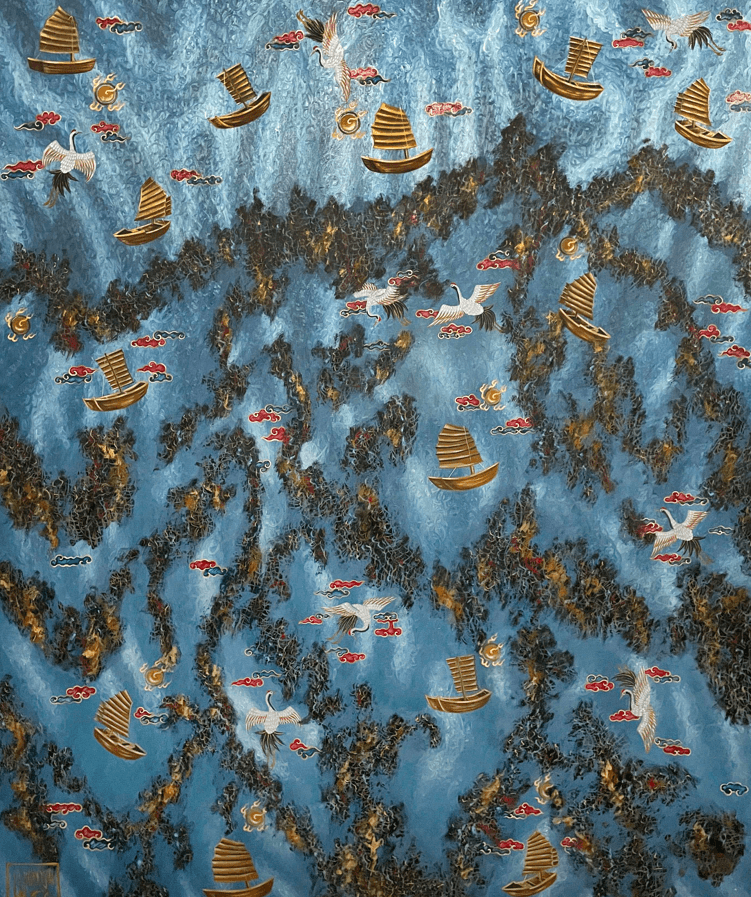

While her distinct robes are present in On The Roots And Routes Of Diaspora, certain pieces stand as entire canvases without the garments. In “Diaspora in Blue,” viewers see oceans and continents as patterns, with China’s traditional vessels moving along the waves and carrying its diaspora to uncharted territories. Meanwhile, “Reimagined Community” paints the picture of a Chinese-Filipino diaspora, with a captivating mix of traditional and cultural elements from both cultures.
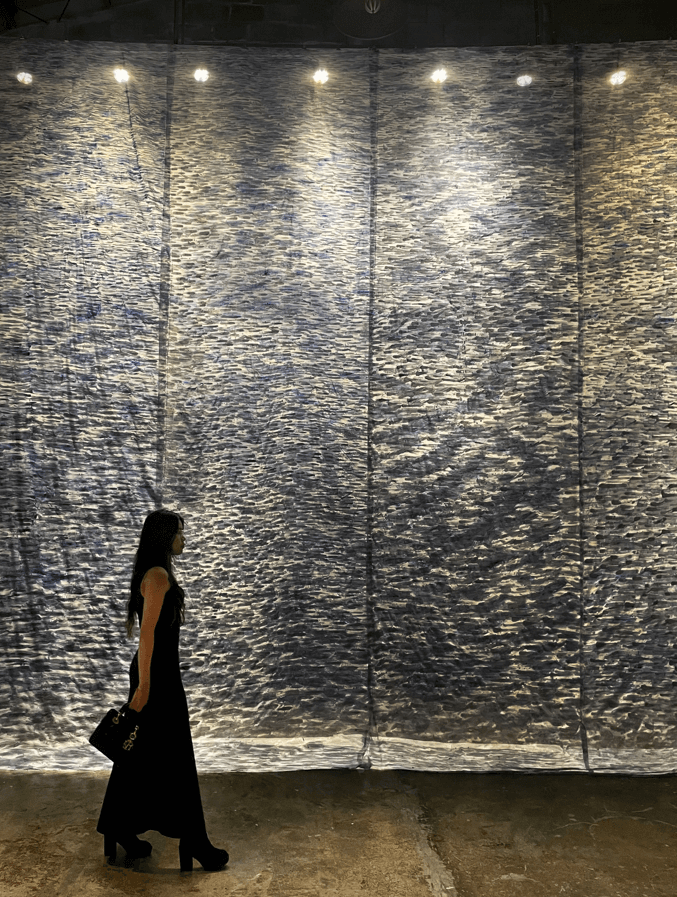
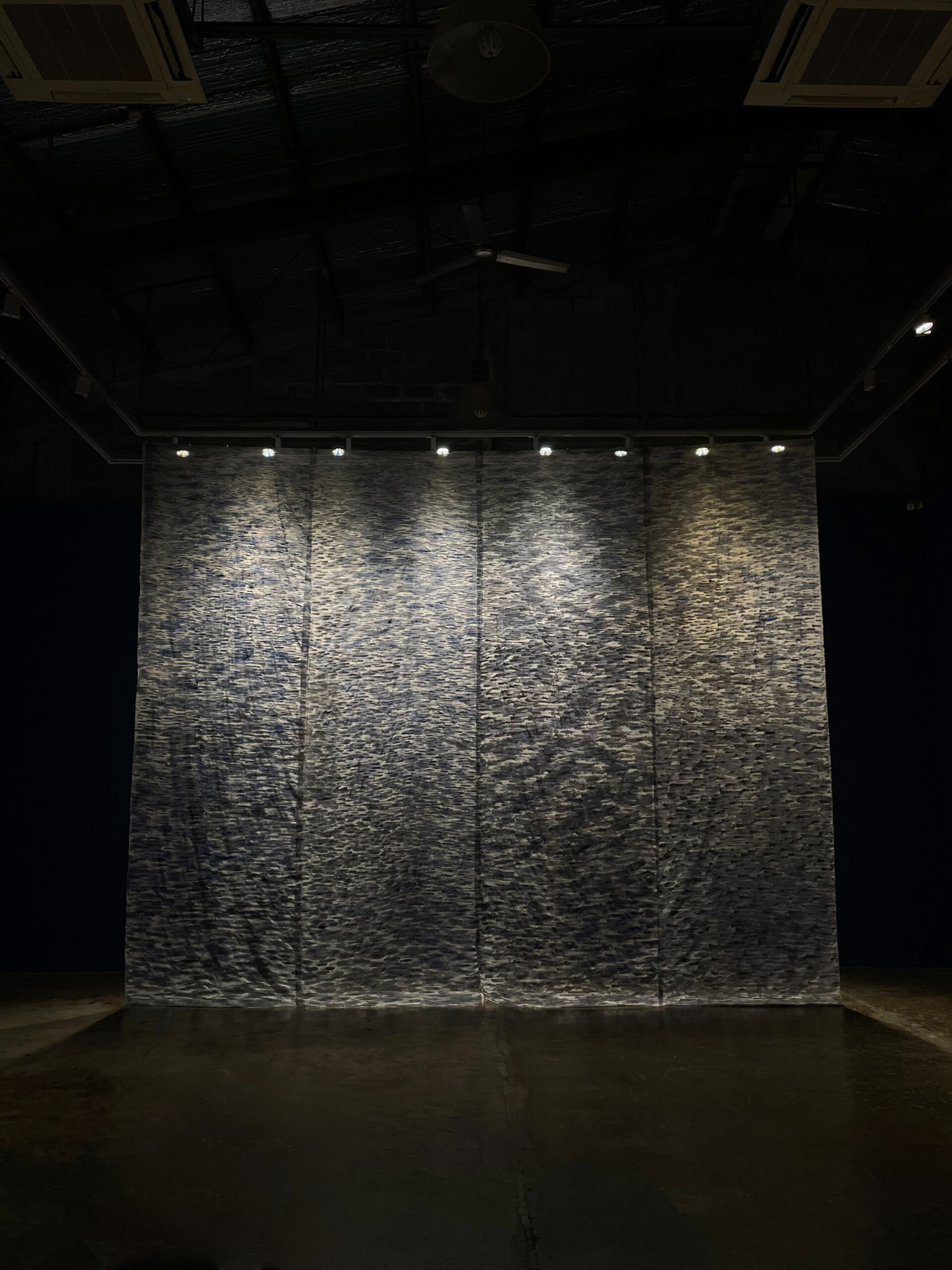
In some works like “The Endless Diaspora,” massive pieces of cloth are in full view, cascading in ripples of color to depict the scale of migration and the seemingly endless collection of narratives that come with it.
Made and Remade
In her latest exhibition, the unraveling of Go’s robes may carry another meaning that expounds on Go’s conversation with her past and heritage, as Daoana writes: “The shattered silk may point at destruction, yes, but it could also convey the re-imagination of the possible, the openness of the cloth to be restitched, and therefore be redefined.”
Go’s pieces are ornate, vibrant maps of a somewhat distant world. Like many descendants of immigrants and members of a diaspora, the artist continues to engage with the past in her own terms, honoring and remembering her roots while staying true to who she is as a woman of two worlds.
On The Roots and Routes of Diaspora runs from August 2 to 26, 2024, at the Finale Art File Gallery, La Fuerza Plaza, 2241 Chino Roces Ave., Makati City.
Photos courtesy of Winna Go and Finale Art File Gallery.





